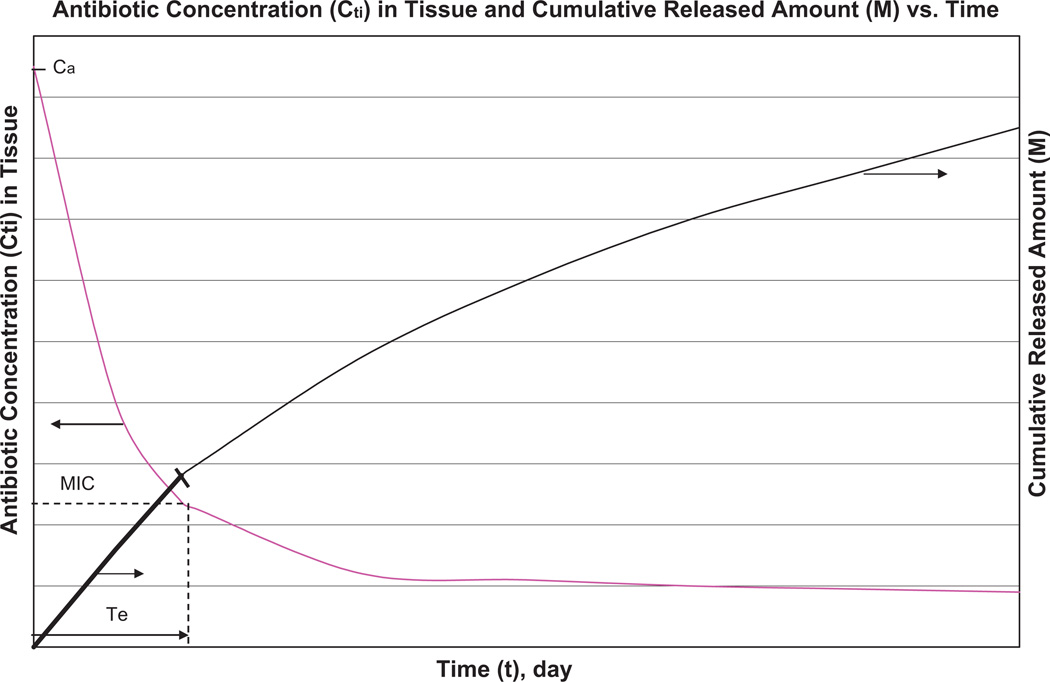Fig. 1.
Qualitative illustration for the notion of effective release—M: cumulative amount released per unit area of catheter (implant) according to the Higuchi equation (Eq. (9b)); Cti: antibiotic concentration in tissue near polymer–drug blend surface according to Eq. (12); Ca: antibiotic solubility in water; MIC: minimum inhibitory concentration which provides bacterial inhibition; Te: duration of effective release during which Cti exceeds MIC. The release rate is maximal and Cti is almost equal to the maximum value Ca initially when the thickness h(t) of layer with dissolved drug particles remains small (Fig. 2) with concomitant rapid diffusion through this layer that provides high concentration Cti. As the drug dissolution proceeds and consequently the diffusion rate through this layer decreases, both the release rate and the concentration Cti decrease. The release remains therapeutically effective as long as Cti > MIC, in spite of Cti decrease. The duration of effective release corresponds to condition Cti(Te) = MIC. –: Effective release and –– useless portion of release.

